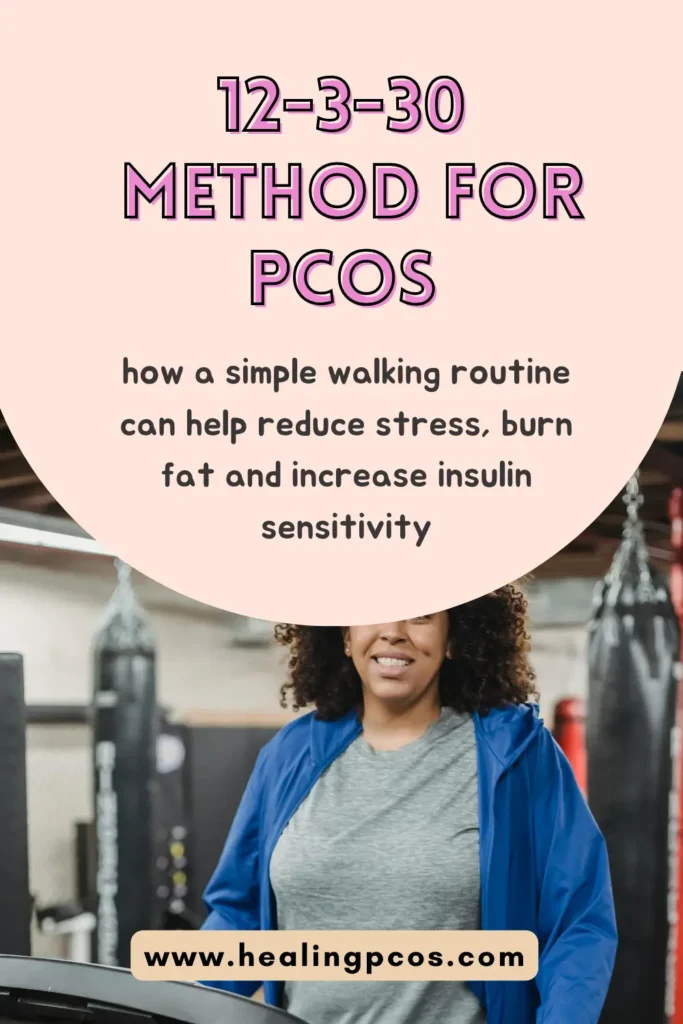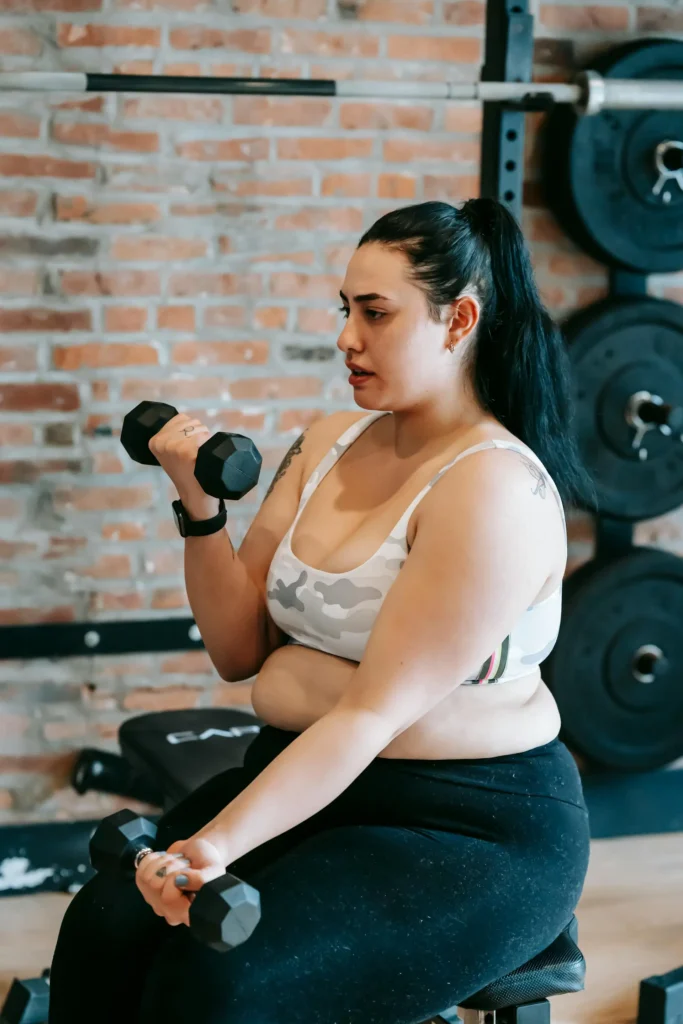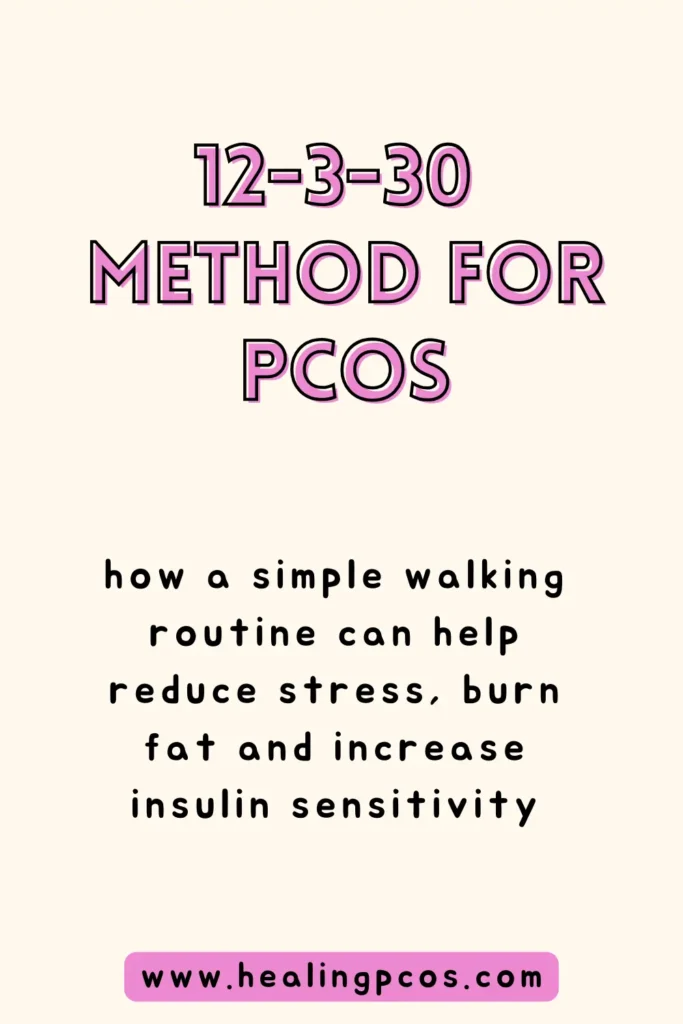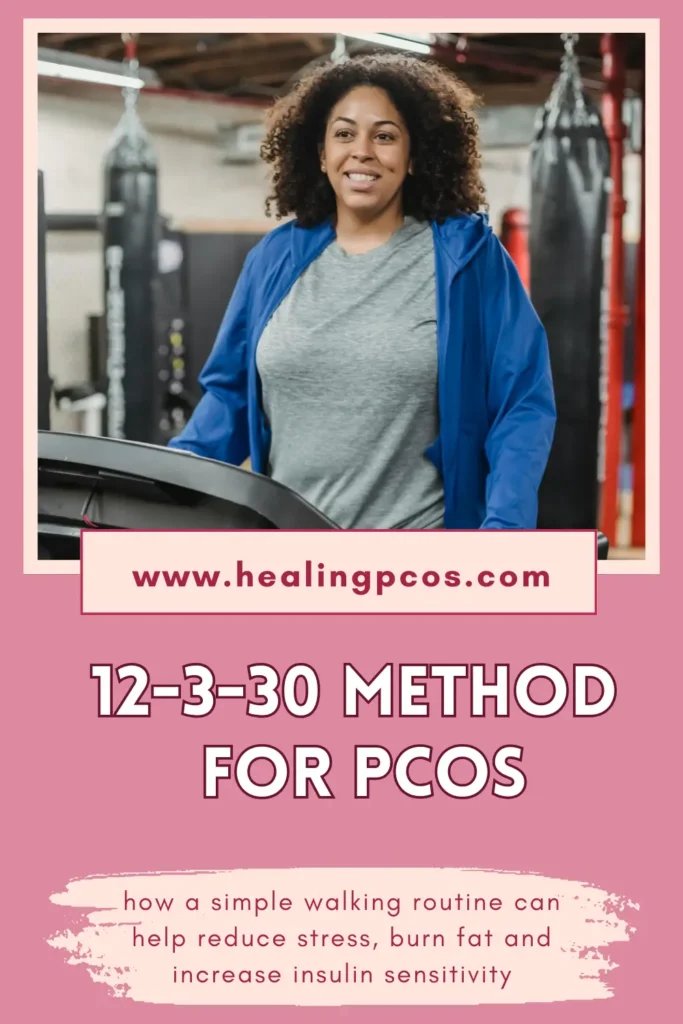12-3-30 Method for PCOS: A Simple Life Changing Routine
Living with PCOS has taught me to be mindful of how my body responds to different lifestyle changes. After struggling for years with symptoms like bloating, painful periods, and a puffy face, I knew I needed to try something different. That’s when I came across the 12-3-30 method—a walking routine that’s simple but surprisingly effective.
I first saw this method on Tallene’s YouTube channel, a fellow PCOS blogger, and I thought, “Why not give it a try?” Tallene ( of PCOSWeightloss.org), like many of us with PCOS, has shared her journey of finding natural ways to manage her symptoms, and this walking method is one of her favorites.
I can confidently say that incorporating it into my routine has made a huge difference in how I feel on a daily basis. Let me share how it works and the benefits I’ve personally experienced!

What is the 12-3-30 Method?
The 12-3-30 method is a simple treadmill workout that involves walking at a 12% incline, a speed of 3 mph, for 30 minutes. While it may seem like an easy walk, trust me, that incline makes a world of difference!
The added incline engages your muscles more, which boosts the effectiveness of the exercise and helps you target different areas of your body, including your core and legs.
The beauty of the 12-3-30 method is that it’s easy on the joints, and you don’t need to be a fitness expert to do it. It’s something you can fit into your day, and the results—at least for me—speak for themselves.

Why Walking for PCOS Works
Walking might seem like a low-impact exercise, but it’s incredibly effective for managing PCOS symptoms. Here’s how walking for PCOS can help:
- Improves Insulin Sensitivity One of the biggest challenges women with PCOS face is insulin resistance. Insulin resistance happens when your body’s cells become less responsive to insulin, leading to higher blood sugar levels. Walking can help improve insulin sensitivity by helping your body process glucose more effectively. This is crucial for managing weight and regulating hormones, which can be out of balance with PCOS.
- Reduces Stress Levels Stress is a major trigger for hormonal imbalances in women with PCOS. Walking, especially at a steady pace like the 12-3-30 method, can reduce stress by promoting the release of endorphins, the “feel-good” hormones. This can help lower cortisol levels, which are often elevated in those with PCOS, and lead to fewer stress-related symptoms.
- Promotes Weight Loss and Fat Burning Many women with PCOS struggle with weight gain, particularly around the belly area. The 12-3-30 method can help target belly fat, thanks to its combination of incline and speed. Regular walking boosts metabolism and can lead to fat loss, especially when combined with a balanced diet. Walking for PCOS is a manageable way to stay active without putting too much strain on your body.
- Increases Circulation and Reduces Bloating Bloating is something that many women with PCOS experience, often due to hormonal fluctuations. Walking can help stimulate your digestive system, reduce water retention, and improve circulation, all of which contribute to less bloating. The consistent motion helps flush out excess gas and toxins from the body, leaving you feeling lighter and less uncomfortable.
My Experience with the 12-3-30 Method
After hearing about the 12-3-30 method, I decided to give it a go. At first, I was skeptical about how much of a difference this simple walk could make. But after a few weeks, I started noticing changes.
Here’s what I’ve experienced since incorporating the 12-3-30 method into my routine:
1. Less Bloating
Bloating has been one of the most frustrating symptoms of PCOS for me. But after a few sessions of walking at a 12% incline, I noticed that my stomach felt flatter, and I wasn’t as uncomfortable after meals.
It’s amazing how much better you can feel just by getting your blood flowing and helping your body eliminate excess fluids.
2. Reduced Painful Periods
Before I started walking regularly, my periods were excruciating. The pain would often leave me bedridden, unable to do much of anything. Since doing the 12-3-30 method, I’ve noticed a reduction in period pain. Regular walking helps regulate hormones, and I believe this has played a role in reducing the severity of my cramps.
3. A Less Puffy Face
My face used to look puffy and inflamed, likely due to water retention from my PCOS. Since starting the 12-3-30 method, my face looks less bloated, and I’ve noticed an overall improvement in my skin. Sweating helps release toxins, and the added circulation reduces puffiness. I even feel like my complexion has improved!
4. Sweating Out the Toxins
One of the most noticeable benefits for me has been the sweat! While it might seem like a minor thing, sweating helps release toxins from your body. I’ve felt more refreshed and less sluggish after my walks, and it’s a great way to detox without needing to do anything too intense.
Other Methods to Help Manage PCOS Symptoms
In addition to the 12-3-30 method, I also find that incorporating daily steps and a gentle strength workout routine really supports my journey with PCOS. These small but effective changes have worked wonders for me!
5000 Steps a Day: Why It’s Worth It
When I first set the goal of walking 5000 steps daily, I didn’t realize how much of an impact this simple goal would have. Getting those extra steps in, whether it’s during a walk, running errands, or just taking extra strolls—has helped with my energy levels and has kept me feeling active without overexerting myself.
Consistency is key, and 5000 steps daily helps keep my body moving, which improves circulation and aids in digestion, both of which are crucial for women with PCOS.
According to a study published in The Journal of Physical Activity and Health, even moderate levels of daily physical activity, like walking 5000 steps, can reduce the risk of developing metabolic complications associated with PCOS, such as insulin resistance. It’s a great way to start getting into a routine without feeling overwhelmed.
Slow Weighted Workouts 4 Times a Week

Strength training is another important component of managing PCOS. But instead of doing intense workouts, I’ve found slow, controlled weight training to be the most beneficial.
I aim for four sessions a week, focusing on low weights with higher repetitions. This helps build lean muscle, which boosts metabolism and improves insulin sensitivity. Plus, it’s much gentler on my joints and less likely to leave me feeling fatigued.
The key with PCOS is finding a routine that supports your body without causing additional stress. Slow weighted workouts are a fantastic way to build muscle and strength while also being mindful of your energy levels.
If you area complete beginner to weighted exercise you can start with this strength building workout specifically for women with PCOS. Do it 5 times a week for a few months to get your body ready for more intensive strength training exercises.
Tips for Success with the 12-3-30 Method
If you’re considering trying the 12-3-30 method, here are a few tips to get the most out of your walk:
- Start Slow: If you’re new to walking or exercise, you can start at a lower incline or slower pace and work your way up.
- Stay Consistent: To see results, consistency is key. Try to walk at least 4-5 times a week.
- Combine with Healthy Eating: Walking can help with weight loss, but combining it with a balanced diet is essential. Focus on whole foods, like vegetables, lean proteins, and healthy fats, and limit processed foods.
- Listen to Your Body: If the 12-3-30 method feels too intense at first, don’t be afraid to make adjustments. It’s important to listen to your body and not push yourself too hard.
Is the 12-3-30 Method Right for You?
The 12-3-30 method has become a cornerstone of my daily routine, and I truly believe it has helped me manage my PCOS symptoms more effectively. It’s not a quick fix, but with time and consistency, it can help you feel better, look better, and manage some of those frustrating PCOS symptoms.
If you’re looking for a low-impact, easy-to-do workout that can help with bloating, painful periods, and overall wellness, I highly recommend giving the 12-3-30 method a try. Trust me, your body will thank you!










